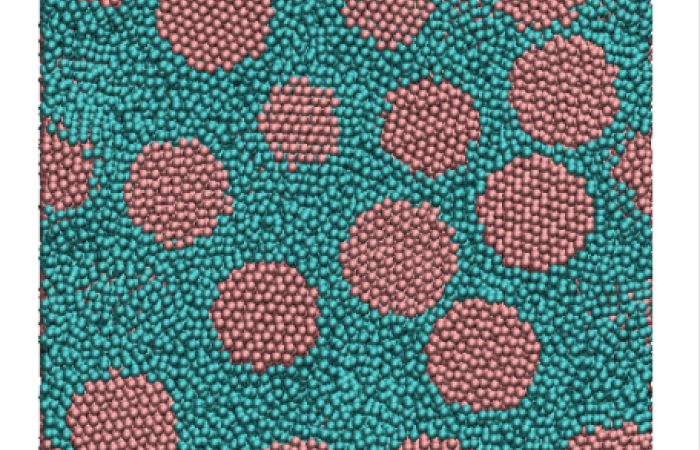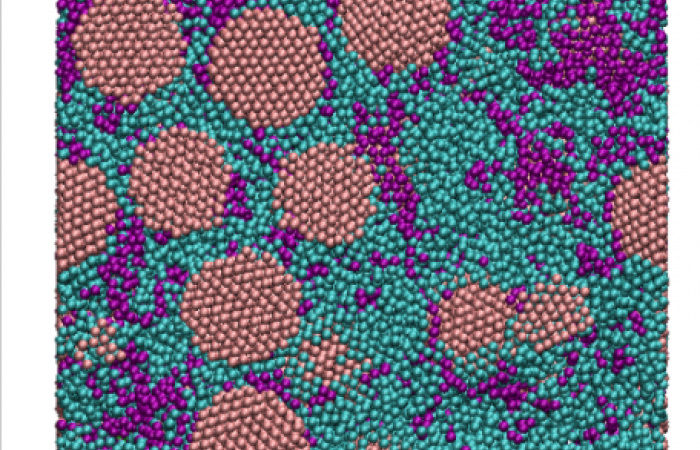-

Researchers used computer simulations to produce images of polymer nanocomposite materials. Nanoparticles are shown in pink and long polymer chains in cyan. Credit: Jan-Michael Y. Carrillo/ORNL, U.S. Dept. of Energy
-

Adding an optimal quantity of short polymer chains, depicted in purple, improved polymer materials' mechanical properties the most. Credit: Jan-Michael Y. Carrillo/ORNL, U.S. Dept. of Energy
-
From left, simulations show increasing concentrations of short polymer chains. Optimal mixing of short and long chains improved polymer materials' mechanical properties. Credit: Jan-Michael Y. Carrillo/ORNL, U.S. Dept. of Energy
-

Researchers used computer simulations to produce images of polymer nanocomposite materials. Nanoparticles are shown in pink and long polymer chains in cyan. Credit: Jan-Michael Y. Carrillo/ORNL, U.S. Dept. of Energy
-

Adding an optimal quantity of short polymer chains, depicted in purple, improved polymer materials' mechanical properties the most. Credit: Jan-Michael Y. Carrillo/ORNL, U.S. Dept. of Energy
-
From left, simulations show increasing concentrations of short polymer chains. Optimal mixing of short and long chains improved polymer materials' mechanical properties. Credit: Jan-Michael Y. Carrillo/ORNL, U.S. Dept. of Energy
Oak Ridge National Laboratory scientists have discovered a cost-effective way to significantly improve the mechanical performance of common polymer nanocomposite materials. The discovery could lead to stronger, more durable materials for applications ranging from biomedical devices to automobile tires.
Glassy polymer nanocomposites, or PNCs, are sought-after materials with hard filler nanoparticles dispersed throughout their soft polymer matrices. While studying why PNCs demonstrate certain advantageous properties, researchers tried mixing in short and long chains of the same polymer.
"We found that by adding a small amount of the short polymer chains, the resulting mechanical properties were improved by 20%," ORNL's Vera Bocharova said. "This is good for practical applications."
Experimental data and computer simulations revealed that changes to polymer-nanoparticle interactions, polymer stretching, and density at nanoparticles' interfaces were responsible for the enhanced properties. The study results can be universally applied to PNCs and may help researchers design future materials with desired qualities.






